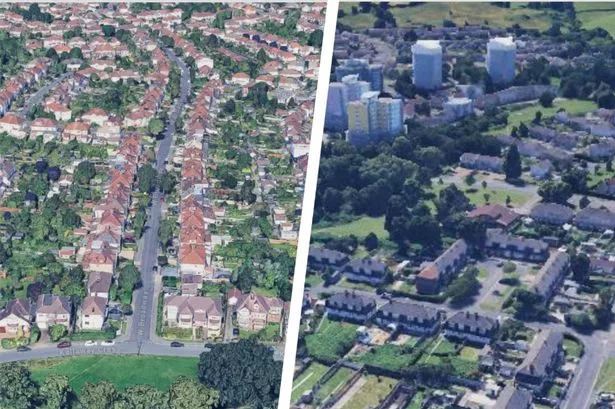Science
Government Unveils Deprivation Index Highlighting Bristol Inequality

The Government of the United Kingdom has released a new deprivation index, revealing the significant socio-economic inequalities in Bristol. This marks the first update in six years, showcasing a troubling stability in the disparities between affluent and deprived areas within the city. The comprehensive data highlights both the wealthiest and the most disadvantaged neighbourhoods, illustrating a stark contrast in living conditions.
According to the latest figures, Bristol contains some of the wealthiest communities in England. The neighbourhood of Henleaze ranks in the top 0.3 percent among over 33,000 areas across the country. In stark contrast, less than a mile away, the Southmead area is among the bottom three percent of deprived regions in England. This juxtaposition underscores the deep socio-economic divides that persist in the city.
The deprivation index assesses seven crucial aspects of life, including income, employment, health, education, and crime rates. Each street and home in Bristol has been categorized into one of 33,755 neighbourhoods, allowing for a more granular understanding of local conditions. The city itself is divided into 268 neighbourhoods, many of which are comprised of only a few streets. The results indicate that inequality has worsened since the last survey in 2019.
Key Findings from the Deprivation Index
The data reveals that six of the eight most deprived areas in Bristol are located in Hartcliffe, with the others situated in Withywood and Inns Court. The most deprived neighbourhood, identified as Bristol 053E, stretches from Fulford Road to the tower blocks on Bishport Avenue. This area ranks as the 211th most deprived small neighbourhood in England, placing it in the bottom 0.6 percent of all neighbourhoods assessed.
Adjacent areas also fall within the top one percent of most deprived regions. For example, neighbourhoods around Morrisons in Hartcliffe and Maynard Road to the north of Hartcliffe are similarly ranked. Additionally, much of Withywood, Knowle West, Barton Hill, and Easton are among the lowest five percent in socio-economic standings.
Interestingly, the most deprived neighbourhood in the wider Bristol area is not within the city limits. The Bournville Estate in Weston-super-Mare features two neighbourhoods that rank among the lowest one percent in England, with one area near Bournville primary school being the 86th most deprived in the country.
Contrasting Communities
While many areas of Bristol struggle with deprivation, other neighbourhoods shine as some of the least deprived in England. The Henleaze area, which includes several streets around West Broadway, boasts the lowest scores for income, crime, employment, education, housing, and health. Only 103 small areas in England rank better in terms of socio-economic conditions.
This disparity is further highlighted by the proximity of wealth and poverty. The affluent Henleaze neighbourhood is less than a mile from the deprived areas of Southmead, illustrating the significant gaps in opportunity and quality of life within such close geographic boundaries.
As the Government releases these figures, local communities and leaders are called to address the entrenched inequalities that impact the lives of many residents. The stark reality of deprivation in Bristol serves as a reminder of the ongoing challenges that require urgent attention and action.
-

 Entertainment3 months ago
Entertainment3 months agoAnn Ming Reflects on ITV’s ‘I Fought the Law’ Drama
-

 Entertainment4 months ago
Entertainment4 months agoKate Garraway Sells £2 Million Home Amid Financial Struggles
-

 Health2 months ago
Health2 months agoKatie Price Faces New Health Concerns After Cancer Symptoms Resurface
-

 Entertainment3 months ago
Entertainment3 months agoCoronation Street’s Carl Webster Faces Trouble with New Affairs
-

 Entertainment2 months ago
Entertainment2 months agoWhere is Tinder Swindler Simon Leviev? Latest Updates Revealed
-

 Entertainment4 months ago
Entertainment4 months agoMarkiplier Addresses AI Controversy During Livestream Response
-

 Science4 weeks ago
Science4 weeks agoBrian Cox Addresses Claims of Alien Probe in 3I/ATLAS Discovery
-

 Entertainment4 months ago
Entertainment4 months agoKim Cattrall Posts Cryptic Message After HBO’s Sequel Cancellation
-

 Entertainment2 months ago
Entertainment2 months agoOlivia Attwood Opens Up About Fallout with Former Best Friend
-

 Entertainment3 months ago
Entertainment3 months agoMasterChef Faces Turmoil as Tom Kerridge Withdraws from Hosting Role
-

 Entertainment4 months ago
Entertainment4 months agoSpeculation Surrounds Home and Away as Cast Departures Mount
-

 World2 months ago
World2 months agoCole Palmer’s Mysterious Message to Kobbie Mainoo Sparks Speculation




















